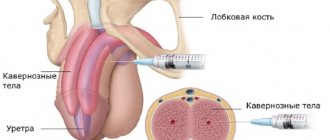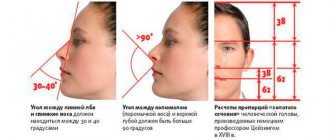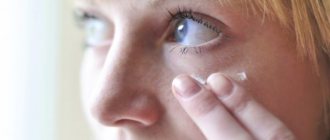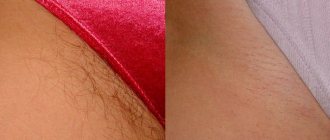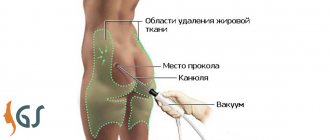What is hair transplant?
Hair transplant is a surgical process that involves transplanting hair follicles into areas where hair has become balding. Hair transplant is a surgical process that aims to permanently treat hair loss. Donor hair, which is genetically resistant to hair loss, is usually collected from the back of the head and the side of the ear.
If there is not enough hair in these areas, it can be collected from other areas such as legs, chest, beard. Hair obtained from another person is not transplanted. The method is usually used to eliminate aesthetic problems, and therefore belongs to the field of aesthetic and plastic surgery.
Hair loss: causes, prevention methods and treatment
Beard in hair transplantology
Hair transplant using beard grafts is usually performed in cases where the patient has an insufficient amount in the donor scalp. Beard roots can remain in the growing stage for a long time and are considered the most suitable donor site after the occipital region. Beard grafts are known to be thicker than grafts at the back of the head. For this reason, in order to provide better volume in the transplanted area, hair grafts extracted from the beard are transplanted to the upper area.
Why is hair transplant performed?
Hair transplantation is used to solve the problem of regional baldness, which worsens with hair loss. This can also be done in the area of eyebrows, beard and mustache
Who can get a hair transplant?
This procedure can be performed on healthy men and women aged 20 to 75 years who have the following problems as well as congenital regional hair loss:
- Androgenetic alopecia (genetic hair loss)
- Scar from burns or injury
- Facelift, brain surgery, etc.
- Past infection
- Excessive hair stretching (tracing alopecia)
The most important requirement for the procedure is that the person undergoing hair transplantation has enough donor hair to cover the areas that have gone bald.
Hair transplant is contraindicated for those who are suffering from chronic and serious diseases such as hypertension, diabetes, kidney failure and ringworm, etc. People undergoing chemotherapy are also contraindicated for hair transplant.
When is FUE not recommended?
As mentioned above, if the test is negative, it is advisable to replace FUE with the traditional technique. It is not advisable to perform hair transplantation on women without identifying the causes of baldness: it may not give the desired results. Doctors also do not recommend transplantation for young people under the age of 25, but in each case the question of the advisability of micrograft transplantation is decided individually.
But there are practically no absolute contraindications to hair transplantation, except for:
- significant bleeding disorders;
- decompensated diabetes mellitus;
- individual intolerance to anesthesia.
Causes of hair loss
Hair loss can develop for many reasons. Of these, the most important are:
- Genetic factor
- Hormonal (especially testosterone deficiency) factor
- Menopause
- Pregnancy
- Stress
- Poor nutrition
- use of certain medications
- Diseases
- Environmental factors
Mesotherapy: procedure, types, benefits and side effects
How is hair transplant performed?
- To determine the transplant area, you need to conduct a hair analysis. In order for the hair to subsequently look natural, a new hairline and the required amount of graft are determined.
- The areas where the graft is being harvested are given local or sedative anesthesia.
- To prevent the development of infection, the scalp is thoroughly cleaned with a special preparation.
- The grafts collected from the transmitter area are kept in a special solution.
- The transplant area is numbed with anesthesia
- The grafts are placed in open canals.
How long does a hair transplant take?
This operation is considered an outpatient treatment and generally does not require inpatient monitoring. Typically the process takes 6-9 hours. This period may vary depending on the number of hair follicles and the method used.
If the transplant is planned for a large area, then 2 or more sessions may be required.
Is hair transplant a painful procedure?
No pain is felt since both the donor and recipient areas are numbed with local or sedative anesthesia during hair transplantation.
FUE hair transplant surgery
Hair transplantation has come a long way, but it was not until the mid-1990s that hair transplantation began to take shape and was used with the techniques that are practiced throughout the world today. Hair transplantation performed with the FUT method in the nineties has been replaced by the FUE method, which was developed in the early 2000s and introduced in 2005. Although this technique is constantly evolving with some refinement, the basic principles of FUE remain the same. Today, this technique is still considered the gold standard of hair transplant surgery.
The most advanced method in hair transplantation is the FUE method.
Today, people suffering from hair loss can be provided with natural hair with the latest modern FUE technique, the gold standard of hair restoration.
The main difference of using the FUE method for hair transplantation is that it leaves no scars and the recovery time is shorter. The success of surgeries has also increased due to advances in medical devices used in the FUE technique. The FUE method can be performed using various instruments. Due to this, the technique is known by several names such as:
- Classic FUE (via micromotors)
- Robotic FUE
- DHI method (FUE performed with Choi implants)
- Sapphire FUE (FUE made with Sapphire blades)
For example, FUE hair transplantation with sapphire tips is an important method that can transplant a large number of hair follicles in one session. The difference from classic FUE can be seen in that the channels opened with a much smoother material, sapphire, heal much faster and leave fewer marks. The DHI method also comes to the forefront in hair transplantation for thickening purposes. With this method of hair transplantation with Choi needles, natural and satisfactory results can be obtained.
Hair transplant methods
There are 2 main methods for collecting hair from the transmitter area:
- Follicular Unit Transplantation (FUT)
- Follicular Unit Extraction (FUE)
The name of the first hair transplant method comes from the English word strip - strip, flap.
FUT (Follicular Unit Transplantation)
The graft is introduced and removed using incisions. A flap of skin is removed from the occipital region, it is cut and divided into parts (grafts) containing a small group (from one to four) of hair follicles. It is these grafts that are transplanted into problem areas. The operation is carried out in several stages.
FUT Hair Transplantation: Procedure, Benefits, Risks and Price
- First, the surgical field is prepared in the occipital region.
- If necessary, the hair is cut to a length convenient for removing the flap.
- Then the flap is determined and marked, and local anesthesia is administered.
- After simple manipulations with a scalpel, the wound is carefully sutured.
- The removed strip is “split” into grafts, which are implanted into previously prepared canals.
- On average, such an operation lasts 3-4 hours, after which a two-week rehabilitation period is required, but the patient can leave the clinic on the same day.
- One of the main advantages of the method: the seam at the back of the head will be covered with hair, and the graft insertion sites will be visible for a maximum of 10 days.
- Another advantage of the technology is that a large number of grafts can be transplanted in one operation.
The patient will be able to start working the very next day after the operation.
However, over the next three weeks you will not be able to visit the bathhouse or solarium, actively engage in sports or lift weights.
Possible complications
Compliance with the above recommendations will help avoid complications.
Redness of the skin, pimples and itching that appear immediately after the procedure are considered normal, since the follicular compounds “in the new place of residence” begin to become active, take root, and lymph flow is restored. After 2 weeks, these phenomena usually disappear. During the first night, patients may experience discomfort due to inability to sleep, which may be caused by psychological stress. Sleep is completely normalized on the 5th day after the transplant.
Illiterate operation, associated with errors or inexperience of the doctor, as well as violation of sterility or postoperative recovery conditions, can lead to unpleasant complications:
- the appearance of visible scars and cicatrices on the skin, swelling on the face;
- reducing skin sensitivity at transplant sites;
- rejection of the transplanted material if synthetic or foreign hair was used.
FUE method
The second (FUE) method differs from the previous one in being less traumatic.
- Hair bundles containing 1–6 follicles are removed from the donor area. This is done using a special machine (hence the name of the technique) with a rotating punch.
- As a result, small scars with a diameter of about 1.5–5 mm (according to the diameter of the punch) remain in the area.
- They heal faster than a large strip scar, but also remain visible for life.
- The removed bundles are divided into grafts and cleared of damaged follicles, because With this method of sampling, the loss of follicles can be up to 70%.
- Graft transplantation is performed using a scalpel and tweezers, as with the strip method, and also does not provide the natural thickness and slope of the hair.
- The density of grown hair is 40–60 units per cm2.
FUE hair transplant: methods, benefits and prices
Nevertheless, the ability to streamline hair transplantation through the use of machines makes the FUE method quite popular at the moment. However, all the disadvantages of the previous method can be observed in this case, although to a slightly lesser extent.
Hair follicles are removed without incisions, and they are inserted into the skin surgically. The main stages of the operation are similar to the patchwork method discussed above, but there are also differences.
In particular, the doctor can take follicles not only from the back of the head, but also from the scalp, arms and back. This makes it possible to transplant a larger number of grafts, which allows you to achieve the greatest hair density.
The combined method is less invasive, the incisions are much smaller, therefore, the operation is easier, and rehabilitation is faster and with fewer complications. The rehabilitation period is no less than two and no more than four weeks. Despite the fact that the patient does not experience discomfort or severe pain during the procedure, in most cases the use of painkillers in the first two to three days after surgery is strictly necessary.
The advantages of seamless hair transplantation are due to:
- Absolute absence of scars after surgery
- Self-healing of microholes
- Accurate calculation of the number of grafts and hair follicles with a uniform structure
- Preserving the natural rate of hair growth and its characteristics
- Low invasiveness
- A short period of rehabilitation of the body.
FUE Method using Micromotor (classic method)
In the classic FUE technique, cuts are created by using steel blades. With these slotted blades, cuts must be made with great precision, taking into account the natural direction of hair growth. This will allow the transplanted grafts to grow in a natural direction. When making gaps in the recipient area, it is very important to follow the direction of the existing hair in that area.
FUE technology uses steel blades to make cuts in the recipient part. During surgery, after hundreds of cuts have been made, these steel knives must be replaced with new ones.
Robotics FUE
A plastic surgeon with high qualifications and extensive experience in the field of hair transplantation will be able to work with the device. However, the device takes over and performs at an extra-class level such stages of the operation as the collection of grafts and the preparation of micro-holes for graft transplantation.
The robot creates 3D images of the donor and recipient (bald area) areas, analyzes the density of hair growth and extracts hair follicles for subsequent transplantation. The robot calculates exactly how many grafts can be used on a specific donor site in order to maintain the natural thickness of the hair thereafter. The process of collecting grafts for subsequent transplantation occurs quickly and efficiently.
This unique device scans the hair for melanin pigment, tracks the depth and angle of growth and extirps the follicle in an ideal form for transplantation. Meanwhile, the surgeon sets the parameters for the direct transplant: the direction and angle of growth of the new hair, the density of the incisions. Then the robot starts working again.
According to the program established by the doctor, the robot is capable of preparing up to 1,500 micro-holes per hour, which is several times faster than with a classic transplant. And the shorter the time that the extracted follicles stay outside the body, the more efficiently and quickly they will take root in a new place.
What is inflammation? Causes, symptoms and treatment
Thus, the robotic transplant method will help perform complex transplant operations several times faster and more efficiently.
DHI method
The doctor removes the hair follicles one by one using a special very small instrument (0.7 to 0.9 mm in diameter). Extraction is performed in the lateral and occipital areas, which are not susceptible to genetic factors. The DHI method is often confused with FUE, but in fact there are some differences between the two methods.
This method is also known as the canalless transplant method. This is done using a sharp, feather-like tip known as a Choy Needle. The hair roots collected from the transfer area are placed in a hopper inside the instrument and planted directly with special ends without opening any hole in the area where the hair will be transplanted.
This way they are minimized while the grafts are on the outside, allowing them to remain stronger.
Sapphire FUE
Technological advances that we see every day have contributed to the development of new, innovative hair transplant methods, as well as the treatment of hair loss.
Hair transplantation, which has progressed and evolved over the years to become a well-established and minimally invasive surgical procedure, has taken its final form in line with the more effective use of new medical devices.
The FUE method, which is considered one of the most modern and widely used methods of hair transplantation, providing natural results, has become even more successful thanks to the use of special devices with sapphire blades.
There is also the Gold Technique, in which the devices used in hair planting are made of gold.
Hyperbaric FUE
Once the process is completed in this method, the patient receives hyperbaric oxygen therapy. The patient breathes pure oxygen for a while, increasing the oxygen level in the blood. Oxygen therapy is designed to restore hair follicles faster.
Laser FUE
Laser FUE (laser-assisted hair transplant surgery) is the opening of canals in the transplant area using a low-density laser beam. Thus, blood circulation under the skin increases, increasing the likelihood of hair follicles adapting. Bleeding does not increase as the blood vessels clot during the transplant.
What is Botox? When and how is it used? Is it dangerous?
Laser FUE is not a widely used method and experts have different opinions about it. The main criticism is that it is claimed that the laser beam does not increase blood circulation, but burns and damages the blood vessels, and there is a possibility that the adaptation of the hair follicle will be low.
Principles of embryo flushing and transfer
What is an embryo?
A newborn heifer has several hundred thousand follicles , inside of which there are eggs. Throughout life, a relatively small number of follicles become mature, Graaffian follicles. Usually one egg matures per cycle, sometimes two eggs mature and in this case twin calves are born.
The egg develops and matures inside the follicle in the ovary , the final stage of egg maturation occurs with the rupture of the follicle and is called ovulation. Since a cow often gives birth to one calf a year, sometimes two, the ovaries have a natural system that prevents a large number of eggs from maturing and, accordingly, being released at once in one cycle.
After leaving the follicle, the egg enters the fallopian tube. During the process of insemination of a cow, sperm penetrate the uterus and move along the horns of the uterus. Fertilization occurs, at the moment the sperm meets the egg and the development of the embryo begins from the fertilized egg.
An embryo is a developing calf—the size of the embryo after 24 hours is only 0.15 mm. Cell division and differentiation begins. First, cell division occurs in the uterine horn. After fertilization, only 5-6 days later the embryo enters the uterus.
At the age of one week, the spherical embryo reaches a diameter of 0.15 mm and is surrounded from the outside by a protective membrane in the upper part of the uterine horn. A week after the hunt, the embryo reaches a diameter of 0.15 mm, and thanks to its protective shell, it can be seen under a microscope. Then the embryo grows and 35 days after the hunt, the length of the embryo reaches one centimeter. If the embryo were allowed to continue to develop in the cow's uterus, it would break down the lining and be able to attach to the wall of the uterus. On the 7th day after insemination, the embryos are washed out; during this period, the embryos are already in the uterus but still inside their membranes. The shell protects the embryo and makes it easier to find them. 35 days after the hunt, the length of the embryo is one centimeter. As a rule, at two weeks of age, the embryo attaches to the uterine wall.
Superovulation and embryo transfer
Bovine embryo transfer has one main goal - to obtain from the donor the largest number of calves that have the genetic capabilities of the mother.
To do this, they begin hormonal stimulation of cows, the goal of which is to obtain from the ovary, instead of one egg, the largest possible number of eggs in one ovulation. With the help of the hormone FSH, a large number of eggs mature at the same time. This is called superovulation. FSH i.e. Follicle stimulating hormone is also called superovulation hormone. When mature eggs are almost simultaneously released into the oviduct of the uterus, where fertilization occurs, a large number of embryos can be washed out of the cow's uterus within a week. The condition for successful embryonic transplantation is the observance of synchronicity in the manifestation of sexual estrus in donors and recipients. A week after insemination, the cow’s body does not yet feel pregnancy. In the ovary, at the site of the follicle, the formation of the corpus luteum occurs, which releases the hormone progesterone into the blood. An embryo can be transplanted into a recipient only after one week from the start of the recipient's sexual estrus. Thus, the embryo engrafts in the recipient and the corpus luteum functions.
For successful embryo transplantation, it is important to take into account and maintain the synchronicity of the cycles and their stages of both the donor and the recipient. When transplanting freshly obtained embryos at the age of one week, the embryo can be transplanted within 6-8 days after the start of the recipient's heat. When using frozen embryos, the period from mating to transfer should be exactly one week. During the normal course of the pregnancy process, the embryo is almost always located on the side, in the horn of the uterus, where the corpus luteum appeared. The corpus luteum is formed from follicular cells at the site of the ovulated follicle. Therefore, during the transplantation process, it is also necessary to transplant the embryo into the uterine horn, where the ovary contains the corpus luteum, which functions and releases hormones into the blood.
Advantages of the FUE technique
The advantages of seamless hair transplantation are due to:
- absolute absence of scars after surgery; independent healing of microholes;
- accurate calculation of the number of grafts and hair follicles with a uniform structure;
- maintaining the natural rate of hair growth and its characteristics;
- low invasiveness;
- a short period of rehabilitation of the body.
When does hair start to grow after transplantation?
After 3-6 months, new hair begins to appear normally. The exact result is observed after approximately 12-18 months.
Introduction to Embryo Transplantation
During her life, one cow gives birth to several calves, one calf per year, after puberty. About half of the calves born are bulls. One sire can produce several thousand calves in its lifetime.
If you transplant embryos from a genetically valuable cow, you can get a large number of offspring with the same genetic data.
Embryo transplantation is an excellent method for improving cattle stock. It is necessary to have special skills to successfully perform embryo removal and transplantation. Only through experience can good results be achieved. In Hungary, and more recently, in western Ukraine, the breeding of valuable dairy and meat breeds using embryo transplantation has been successfully practiced. For a number of reasons, it is much easier to export and import embryos than pregnant heifers of valuable breeds.
Fertilized eggs or embryos (zygotes) are washed away seven days later, after the genetically valuable cow is inseminated, before it has time to attach to the uterine wall.
After the embryo is washed out , it is transplanted into the uterus of the recipient cow, which serves as a “surrogate mother” and may not have valuable breed properties. If an embryo implants on the wall of the recipient cow’s uterus, then after 9 months a calf is born, which is significantly superior to the recipient cow in its genetic level.
Recommendations for hair transplant
A transplant is a major surgical procedure. To minimize risks, all details must be examined very carefully by both the surgeon and the hospital. Experience, the surgical team, the medical devices used, hygiene and hospital conditions are extremely important for the success of this procedure.
Before hair transplant
When deciding to undergo hair transplant surgery, you should pay attention to the following details:
- You should not smoke or drink alcohol or caffeine drinks 1 week before surgery.
- If you are taking medications for heart, diabetes, or blood pressure, be sure to tell your doctor.
- Anti-clotting drugs such as aspirin should not be taken 2 weeks before surgery; Do not take multivitamins containing vitamin B and vitamin E as they may increase bleeding for up to 1 week.
- It is necessary to wash your hair before surgery and do not use gels or other chemical products.
- It is important to eat a large meal before surgery as hair transplantation is a lengthy process.
- If the operation is performed under anesthesia, you must come with someone close to you who will pick you up from the clinic, as the effect can last 24 hours.
- On the day of surgery, wear clothes that fasten with buttons or a zipper, such as a cardigan or shirt.
After hair transplant
You must be very careful for 15 days after surgery until the planted hair roots are fixed in their new places. Follow a few rules:
- Do not wash your hair for three days and avoid getting it wet, especially in the areas where hair grows. Gently rinse your hair with your fingertips using the shampoo and lotion your doctor recommends. Your doctor will do this the first time.
- After washing, lightly dry your hair with a towel; try not to use a hair dryer. If you must use it, do not place the hair dryer too close to your head and do not use hot air.
- Avoid sports such as football that will hit the head area.
- Use a small pillow to avoid damaging hair follicles. Lie on your back as much as possible.
- Try wearing clothes that button up for a while. The graft area may become damaged when you remove clothing such as a sweater.
- You can use a hat to protect your hair from external factors such as sun, rain, dust.
- Avoid going to the beach, sauna or sauna.
- Typically, peeling in the hair transplant area ends within 10 days. If it lasts more than 15 days, contact your doctor.
Where is the transplant done?
In Moscow and other large and developed cities there are clinics with an impeccable reputation and highly qualified specialists. Hair transplantation is also possible in Turkey; in this country, similar procedures have been carried out for a long time and successfully. In any case, you should approach the choice of a clinic extremely responsibly. Do not try to save money, this may lead to undesirable consequences. Ask doctors for certificates, licenses and diplomas, study reviews about the clinic and surgeons.
And remember that transplantation can help you get gorgeous hair.

